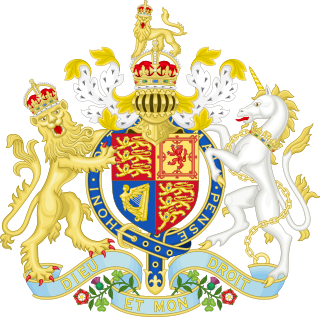
The 27th United States Congress was a meeting of the legislative branch of the United States federal government, consisting of the United States Senate and the United States House of Representatives. It met in Washington, D.C., between March 4, 1841, and March 4, 1843, during the one-month presidency of William Henry Harrison and the first two years of the presidency of his successor, John Tyler. The apportionment of seats in the House of Representatives was based on the 1830 United States census. Both chambers had a Whig majority.

In the 1841 United Kingdom general election, there was a big swing as Sir Robert Peel's Conservatives took control of the House of Commons. Melbourne's Whigs had seen their support in the Commons erode over the previous years. Whilst Melbourne enjoyed the firm support of the young Queen Victoria, his ministry had seen increasing defeats in the Commons, culminating in the defeat of the government's budget in May 1841 by 36 votes, and by 1 vote in a 4 June 1841 vote of no confidence put forward by Peel. According to precedent, Melbourne's defeat required his resignation. However, the cabinet decided to ask for a dissolution, which was opposed by Melbourne personally, but he came to accept the wishes of the ministers. Melbourne requested the Queen dissolve Parliament, leading to an election. The Queen thus prorogued Parliament on 22 June.

The 1840–41 United States House of Representatives elections were held on various dates in various states between July 6, 1840 and November 2, 1841. Each state set its own date for its elections to the House of Representatives, before or after the first session of the 27th United States Congress convened on May 31, 1841. Elections were held for all 242 seats, representing 26 states.

The First Parliament of the Province of Canada was summoned in 1841, following the union of Upper Canada and Lower Canada as the Province of Canada on February 10, 1841. The Parliament continued until dissolution in late 1844.

The 1840–41 United States Senate elections were held on various dates in various states. As these U.S. Senate elections were prior to the ratification of the Seventeenth Amendment in 1913, senators were chosen by state legislatures. Senators were elected over a wide range of time throughout 1840 and 1841, and a seat may have been filled months late or remained vacant due to legislative deadlock. In these elections, terms were up for the senators in Class 2.

On November 20, 1839, a special election was held in Pennsylvania's 14th congressional district to fill a vacancy caused by the death of William W. Potter (D) on October 28 of that year, before the start of the first session of the 26th Congress.

On October 13, 1840, the same day as the general elections for the 27th Congress, a special election was held in Pennsylvania's 22nd congressional district to fill a vacancy caused by the resignation of Richard Biddle (AM).

On November 20, 1840, a special election was held in Pennsylvania's 13th congressional district to fill a vacancy caused by the death of William S. Ramsey on October 17 of the same year.
On May 4, 1841, a special election was held in Pennsylvania's 13th congressional district to fill a vacancy caused by the death of William S. Ramsey (D) on October 17, 1840, shortly after his re-election, and before the 26th Congress had ended.

The 1844 United States elections elected the members of the 29th United States Congress, and took place during the Second Party System in the midst of the debate over whether to annex Texas. Texas and Iowa joined the union during the 29th Congress. Democrats retained control of the House and took back control of the Presidency and the Senate, re-establishing the dominant position the party had lost in the 1840 election.
The 1842 United States elections occurred in the middle of President John Tyler's term, during the Second Party System. Tyler had become president on April 4, 1841, upon the death of his predecessor, William Henry Harrison. Elected as vice president on the Whig ticket with Harrison in 1840, Tyler was expelled from the party in September 1841. Members of the 28th United States Congress were chosen in this election. Florida joined the union during the 28th Congress. Whigs kept control of the Senate, but lost control of the House.
Elections to Liverpool Town Council were held on Monday 1 November 1841. One third of the council seats were up for election, the term of office of each councillor being three years.

The 1841 Alabama gubernatorial election took place on August 2, 1841, in order to elect the governor of Alabama. Term started on November 22, 1841. Democrat Benjamin Fitzpatrick won his first term as Governor with 56.9% of the vote.

The 1841 Connecticut gubernatorial election was held on April 5, 1841. Incumbent governor and Whig nominee William W. Ellsworth was re-elected, defeating businessman and Democratic nominee Francis H. Nicoll with 55.79% of the vote.

In the 1841 Iowa Territory Council elections, electors selected councilors to serve in the fourth Iowa Territory Council. All 13 members of the Territory Council were elected. Councilors served one-year terms.

The 1841 Rhode Island gubernatorial election was held on April 21, 1841.

The 1841 New Hampshire gubernatorial election was held on March 9, 1841.

The 1841 Vermont gubernatorial election was held on September 7, 1841.